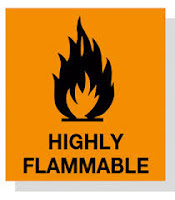OBJECTIVE:
See what happens when we put NaCl and distilled water in a potato and when we put an egg in a vinegar solution and then in a distilled water solution.
MATERIAL:
- 1 egg
- Vinegar
- 1 potato
- Deistilled water
- NaCl
- Spatula
- Beaker
- Knife
PROCEDURE:
Egg: This experiment is divided in two days.
1st Day:
- Weight the egg
- Take a 600mL beaker and put inside the egg
- Cover the egg with vinegar
- Once the egg's shell is removed, clean and dry the egg
- Weight the egg again and write down the number.
- Put the egg in another beaker
- Cover it with distilled water.
2nd Day:
- Left the egg one day in the distilled water. After about a day rinse the egg with water and let it dry.
- Weight again the egg and write it down.
- Break the egg
Potato:
- Lay out three watch glass.
- Slice the potato in three parts lengthwise. Each slice must be of 1,5cm thick.
- Place each slice onto a watch glass and make a hole in the middle of each slice. The hole does not have to cross the slice.
- In the first slice hole, don’t put anything. The second fill it with salt and the third with distilled water.
- Left this preparation 30 minutes.
RESULTS:
Egg:
At the end of the experiment we saw that the distilled water entered into the egg through the sell. The egg increase his size and his weight and when we broke the egg there was lot of water. This is caused because of osmosis.
Potato:
In the potato with distilled water, the water started to enter into the potato because the potato was hypotonic in relation to distilled water.
In the potato with NaCl, the water started to go out because the NaCl was Hypertonic in relation to potato.
QUESTIONS:
Egg questions:
- What is happening when the shells are soaking of acetic acid? The shell is detached from the egg the CO2 is released.
- Write the results of the dimensions and weight of the egg before and after immersing it in distiller water. Write and draw a simple diagram of the water direction. Before immersing: 56'7g After immersing: 59'4g
Potato questions:
- Explain the results of this experiment. In the potato with NaCl, it appeared water and in the potato with distilled water, the quantity of water cut down.
- Why have we left the first slice without any treatment (salt or distilled water)? For have a control.
- Which are the dependent and independent variables? The dependent variable is the water that enter or leave into the potato and the independent variable is NaCl and distilled water.
General questions:
- How can you explain (through osmosis) the ability of plant roots to draw water from the soil? The water has a lot of cohesion and the plants are an isotonic organism, so the roots can draw water from the soil.
- What will it happen if a saltwater fish is placed in a freshwater (low concentration of salts)
- aquarium? The fish will absorb water and it will swell because of osmosis.
Look the image you have below and explain what is happening to the erythrocytes in each situation. In the hypertonic solution the organism has more water than the solution, that has more salts and minerals, and the water leave the organism and it crease. In the isotonic solution the water that leaves the organism is the same quantity than the water that enter in the organism because the solution and the organism have the same quantity of minerals and salts. Finally in the hypertonic solution the organism has more salt and minerals and the water enter into the organism and it gets bigger.





















































